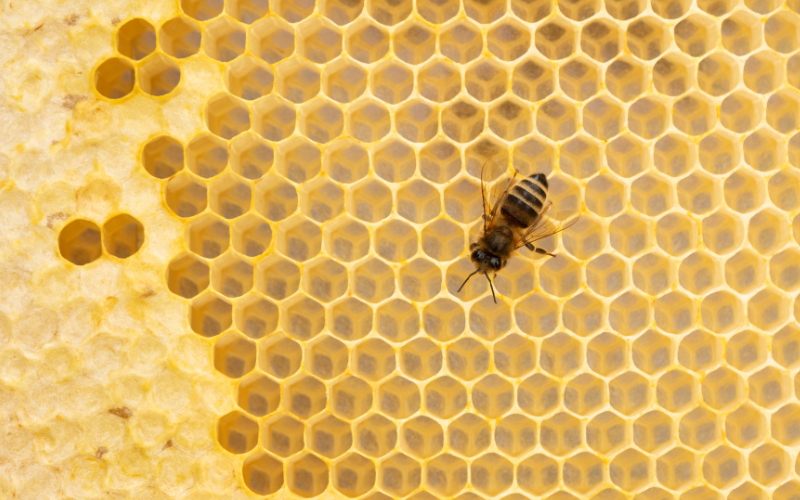
Today, we’re diving into a captivating topic that bridges the worlds of mathematics and the natural environment. Prepare to be amazed as we uncover the hidden mathematical wonders that surround us in the great outdoors. From the intricate patterns of leaves to the mesmerizing symmetry of shells, nature’s beauty is more than meets the eye – it’s a testament to the mathematical principles that shape our world.
The Fibonacci Sequence in Flowers, Pinecones & Hurricanes

Ever noticed the spiral arrangement of seeds in a sunflower or the branching pattern of trees? These are more than just random occurrences; they follow the Fibonacci sequence, a mathematical pattern where each number is the sum of the two preceding ones (1, 1, 2, 3, 5, 8, 13, and so on). These patterns can be found in flowers, pinecones, and even hurricanes. Nature seems to have a thing for these numbers!
In the case of sunflowers, the seeds arrange themselves in a spiral pattern that perfectly follows this sequence. This arrangement not only allows for optimal packing of seeds but also ensures efficient access to sunlight for each seed.
If you examine a pinecone closely, you’ll notice that the spirals of scales follow this sequence. As you count the spirals in one direction, such as clockwise, and then count the spirals in the opposite direction, usually anti-clockwise, you’ll often find two consecutive Fibonacci numbers. This arrangement allows the scales to be optimally packed, promoting efficient seed distribution.
The Fibonacci sequence can be observed in the structure of hurricanes, particularly in the arrangement of cloud bands and the eye of the storm. These cloud bands often exhibit a spiral pattern that follows the Fibonacci sequence. As the bands wrap around the eye of the hurricane, the number of spirals tends to align with Fibonacci numbers.
Read More Fun Facts
Learn more fun facts with Trivia Mastermind content.
Symmetry in Seashells, Butterflies & Beetles

Take a walk on the beach and you’ll stumble upon seashells with stunningly symmetrical designs. Nature’s attention to symmetry can also be seen in butterfly wings and the intricate patterns on beetles. Scientists believe that these symmetrical patterns aren’t just aesthetically pleasing; they often serve a purpose, such as camouflage or attracting mates.
The remarkable symmetrical patterns in seashells, known as logarithmic spirals, are governed by mathematical principles. These spirals can be observed in shells like the nautilus, where each new chamber is proportionally larger than the previous one. The mathematical harmony of these spirals allows the animal to grow while maintaining structural integrity.
Similarly, the symmetrical patterns on insects’ wings, like the intricate designs of butterflies, are more than just eye-catching. These patterns play a role in species identification and survival strategies.
The hardened forewings of beetles can include intricate shapes, lines, and colors that blend seamlessly with the environment, making it difficult for predators to spot the beetle. The symmetry of these patterns enhances the beetle’s ability to blend in and avoid detection.
Play Trivia!
Challenge yourself and play trivia questions with answers and explanations.
The Golden Ratio in Ancient Architecture & Natural Beauty

Math and beauty meet at the golden ratio, a special number approximately equal to 1.618. When you divide a line into two parts so that the ratio of the whole line to the longer part is the same as the ratio of the longer part to the shorter part, this ratio often creates a pleasing and balanced look. This ratio is found in the proportions of ancient Greek architecture, as well as in the arrangements of leaves on stems and the spirals of pinecones. It’s as if nature itself has an innate sense of aesthetics guided by mathematical harmony.
The golden ratio’s allure isn’t confined to art and architecture; it also resonates in our perception of beauty. Studies have shown that faces and objects that align with the golden ratio are often perceived as more attractive by humans.
From the graceful curves of shells to the balanced proportions of a human body, the golden ratio seems to imbue objects with an irresistible visual appeal. It’s a reminder that math isn’t just a tool for solving equations; it’s a fundamental element that shapes the world’s elegance and allure.
Fractals in Tree Branches, Frost & Coastlines

Ever heard of fractals? These mind-bending geometric patterns are infinitely complex and self-replicating. Fractals are like never-ending patterns in nature, where shapes have smaller copies of themselves inside, and those smaller copies have even tinier copies, going on-and-on. They can be seen in the branching of trees, the patterns of frost on windows, and the shape of coastlines. As you zoom in on a fractal, you’ll find smaller versions of the same pattern, revealing nature’s tendency to repeat its beauty at different scales.
In the branching of trees, the main trunk splits into branches, and those branches subdivide into smaller branches, mirroring the larger structure in a self-replicating manner. This branching pattern follows fractal geometry, repeating its form as you zoom in or out.
Moving to frost on windows, you’ll find a mesmerizing display of intricate fractal patterns forming as ice crystals spread. These patterns echo themselves as smaller ice formations appear on individual crystals, crafting an intricate and mesmerizing scene.
Even the shape of coastlines, as seen from above, showcases fractal attributes. The intricate detailing of bays, inlets, and curves that define a coastline are replicated on smaller scales when you zoom in, maintaining the overall shape’s essence.
The Bee’s Honeycomb: Geometry at Work

Bees might be small creatures, but their architectural prowess is mind-blowing. The hexagonal pattern of a honeycomb is a feat of geometric efficiency.
Hexagons require the least amount of wax to create and provide the most storage space. It’s a testament to nature’s ability to optimize and utilize mathematical principles to its advantage.
The honeycomb’s perfection doesn’t stop at its shape—it’s a vibrant hub of activity and productivity. Bees have been practicing this mathematical marvel for millions of years, showing us that even in the miniature world of insects, mathematics plays a vital role in survival and success.
Conclusion:
So, there you have it – a glimpse into the captivating world where math and nature converge. From the spirals of seashells to the symmetrical wonders of butterflies, it’s clear that the natural world is a living testament to the mathematical patterns that govern it. So, the next time you’re out in nature, take a moment to appreciate the intricate geometry and symmetry that surround you – it’s a reminder that math truly is everywhere, even in the most unexpected places. Until next time, keep exploring and discovering the magical math of nature!
Read More Fun Facts
Learn more fun facts with Trivia Mastermind content.
Play Trivia!
Challenge yourself and play trivia questions with answers and explanations.
Recent Posts
Step into a realm of nostalgia as we embark on a journey through the annals of pop culture and bid farewell to 35 recently obsolete technologies. In the ever-evolving landscape of innovation, certain...


